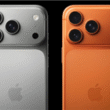Global Smartphone Market Sees 3% Growth in Q3 2025: Key Insights and Trends
Summary
- The global smartphone market experienced a 3% year-on-year growth in Q3 2025, marking a resurgence driven by strong replacement demand.
- Samsung retained its leading position with a 19% market share, while Apple achieved a record high with its iPhone shipments.
- The success of recent product launches, particularly the iPhone 17 series, contributed significantly to this market rebound.
In a notable shift within the technology landscape, the global smartphone market is demonstrating robust growth, according to the latest analysis from Omdia. The third quarter of 2025 saw a year-on-year increase of 3%, signaling a recovery in momentum largely attributed to the introduction of multiple new products during this period. This growth marks a significant milestone as manufacturers adapt to evolving consumer demands and technological advancements.
Factors Driving Growth
Omdia analysts highlight several key factors contributing to the market’s rebound. A surge in replacement demand has emerged, as consumers increasingly seek to upgrade their devices following years of minimal change in the smartphone ecosystem. This replacement trend reflects a growing desire for enhanced features and improved performance among users.
Furthermore, manufacturers have been proactive in preparing for the busy fourth quarter, anticipating heightened consumer activity during the holiday season. Many brands have strategically stocked their channels, ensuring that they are well-positioned to meet anticipated demand.
Leading Brands and Market Shares
Amid this growth, Samsung has secured its position as the world’s leading smartphone manufacturer for the third consecutive quarter, boasting a 19% market share. The ongoing popularity of the Galaxy A series, coupled with the successful launch of its seventh-generation foldable models, has propelled Samsung to the forefront of the market.
Meanwhile, Apple has marked a significant achievement with its iPhone shipments increasing by 4% year-on-year, reaching an impressive 18% market share in Q3 2025. This performance not only underscores Apple’s resilience in a competitive landscape but also represents its strongest third-quarter outcome to date. The latest iPhone 17 series has been particularly well-received, with the standard model enhancing its storage configurations while maintaining its pricing structure, surpassing market expectations. Additionally, the iPhone 17 Pro and Pro Max models continue to resonate with consumers worldwide, further driving Apple’s growth trajectory.
Characteristics of Emerging Competitors
Xiaomi has demonstrated stability in its performance, capturing a 14% market share during this quarter. This consistent presence highlights Xiaomi’s strategic focus on delivering value-oriented devices that appeal to a broad consumer base.
Competing closely, Transsion—which encompasses major brands like TECNO, Infinix, and itel—along with vivo, including its iQOO sub-brand, each claimed a 9% market share, securing their spots among the top five manufacturers for this quarter. Their ability to cater to diverse market segments underscores the importance of innovation and strategic marketing in a rapidly evolving industry.
Conclusion
The insights from Q3 2025 imply a rejuvenated smartphone market, characterized by increased consumer interest and active participation from leading manufacturers. As brands continue to innovate and adapt to consumer preferences, it will be crucial to monitor how these dynamics unfold in the upcoming quarters. The competition is expected to intensify, particularly as new product launches and technology advancements shape consumer behavior.
In conclusion, the smartphone industry is on a positive trajectory, with key players like Samsung and Apple poised to lead the charge as they navigate the complexities of this dynamic market landscape. As we look forward to the holiday season and beyond, the focus will remain on consumer trends, technological advancements, and the strategies employed by brands to maintain their competitive edge.





